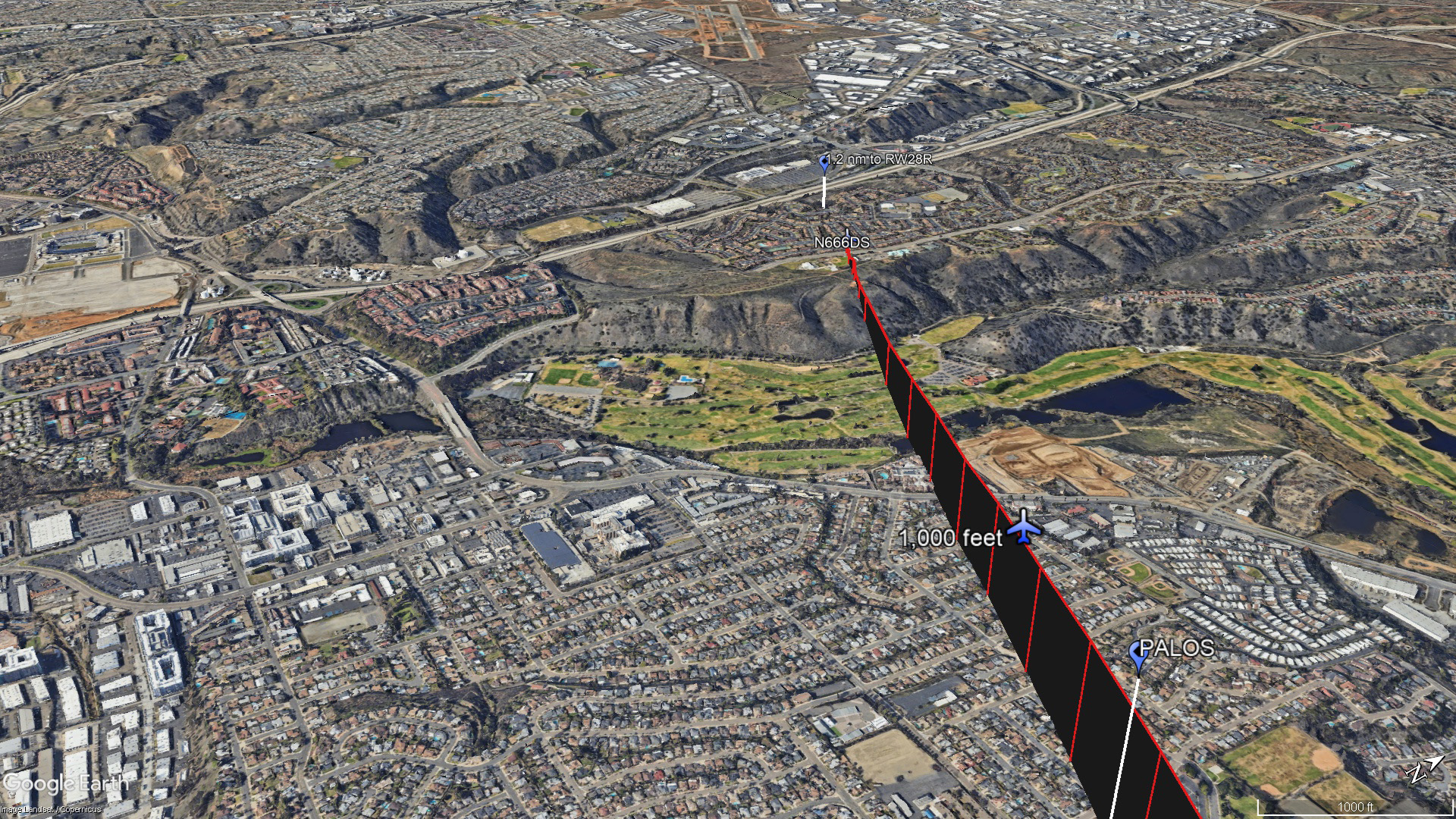Citation struck wires on approach
Altimeter setting may factor in fatal San Diego accident
A Cessna Citation 550 struck high-voltage power lines while approaching Montgomery-Gibbs Executive Airport in San Diego just before 4 a.m. Pacific Daylight Time on May 22. The aircraft was approaching the end of the second leg of a long overnight from New York in instrument conditions and without the benefit of a local altimeter setting—which may become a focus of the NTSB investigation.
Local authorities reported eight people on the ground were injured after the Citation crashed into a military housing neighborhood. The FAA reported six people were on board the aircraft; local officials said there were no survivors among them. All of the injured were treated at an evacuation center established after the crash set multiple homes and vehicles on fire. NTSB investigator Eliott Simpson reported that "fragments of the airplane" were found under power lines under the final approach path.
ADS-B data of the accident flight indicates the aircraft flew past, rather than well above, a tower—the base of which is at just over 400 feet elevation—carrying high-voltage power lines and visible in satellite imagery compiled by Google Earth.
An AOPA Air Safety Institute Early Analysis video (added to this article, above, on May 23) includes details about the pilot, who owned the aircraft and was believed to be qualified to fly it as a single pilot. AOPA Air Safety Institute Senior Vice President Mike Ginter noted the NTSB investigation will likely focus on understanding why the aircraft descended below the published approach, including or excluding instrument error as a reason. ADS-B information indicates the aircraft deviated gradually below the published RNAV (GPS) Runway 28R approach procedure that it was flying and crashed in a residential neighborhood about a mile from the runway.
Publicly available recordings from LiveATC.net of the pilot's conversation with air traffic control during the approach do not include any altimeter setting, though it would be a deviation from established procedure for a controller handling an aircraft flying an instrument approach not to provide one. Investigators are likely to attempt to determine if the altimeter setting was changed prior to or during the approach, or if the pilot intentionally descended below minimum altitude.
The flight path documented by ADS-B is well aligned with the approach horizontally and vertically as it crossed the final approach fix (PENYY) at 2,500 feet, though it deviated below the procedure as the aircraft crossed the final waypoint PALOS. The procedure's minimum altitudes provide a safe margin over obstacles including the high-voltage power lines located 1.5 nautical miles from the approach end of Runway 28R, oriented across the path of oncoming aircraft on the approach.
The conversation with the approach controller began around 3:34 a.m. local time, when the Citation was advised that the "Montgomery [automated weather station] is out of service. Uh, what approach would you like?"
The controller eventually cleared the flight direct to the NESTY waypoint, which immediately precedes the final approach fix for the GPS approach to Runway 28R. The controller did provide some weather information from the Miramar Marine Corps Air Station located 3 nm north of the destination airport.
"November-Six-Delta-Sierra, I've got the, uh, Miramar automated weather, uh, for 0955 Zulu [2:55 a.m. local time] with, uh, wind calm, visibility one half and indefinite ceiling 200," followed by a directive to "descend and maintain 5,500."
The controller, responding to another request, provided weather—but no altimeter setting—from another unnamed station:
"Okay, they're showing, uh, 1030 Zulu weather, wind calm, visibility two-and-one-half, mist, ceiling 300 broken. Correction, 300 overcast."
At 3:41 a.m., the approach controller cleared the Citation for the approach, directing it to cross the NESTY waypoint (then 5 miles away) at or above 3,800 feet. A frequency change was approved at 3:42 a.m. The final ADS-B data point was recorded at 3:46 a.m.
The absence of a reported altimeter setting from any airport in the recorded ATC transmissions could help explain why the 1985 Citation S550 descended below the published procedure. That information, input by the pilot, would have guided the autopilot that was likely controlling the aircraft during the approach, which appears stable and well-aligned with the procedure in all respects but altitude.
While the automated weather station at the destination airport was out of service at the time of the accident, nearby stations recorded low ceilings and limited visibility.
At 3:51 a.m. local time, about five minutes after the final ADS-B report from the aircraft, Miramar recorded calm winds with one-half-mile visibility and vertical visibility of 200 feet, with an altimeter setting of 29.89. A few miles east of Montgomery, Gillespie Field recorded similar conditions at 3:55 a.m., with one-half-mile visibility in mist, overcast at 200 feet, with the same altimeter setting as Miramar: 29.89.
If the accident aircraft's altimeter was still set at 29.92, as the pilot would have used in the flight levels, the variation from local conditions would not be significant—accounting for 30 feet of altitude. A higher altimeter setting than actual conditions required would introduce an error of 100 feet for every 0.1 inches of mercury, according to the FAA Aeronautical Information Manual.
Fatigue may also have been a factor. The aircraft departed Teterboro Airport in New Jersey at 11:15 p.m. Eastern Daylight Time on May 21, and landed at Colonel James Jabara Airport in Wichita, Kansas, departing at 2:36 a.m. Central Daylight Time May 22 for the flight to San Diego.
—AOPA Air Safety Institute staff contributed to this report.






